OLPC One Laptop per Child Project |
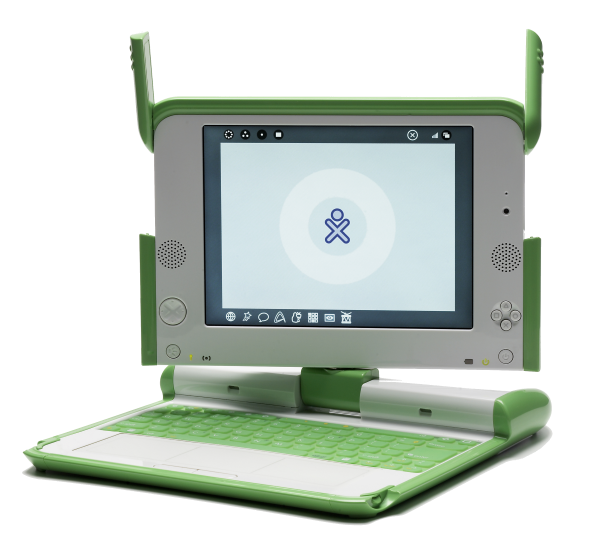
|
 Diese Seite wurde seit 1 Jahr inhaltlich nicht mehr aktualisiert.
Unter Umständen ist sie nicht mehr aktuell.
Diese Seite wurde seit 1 Jahr inhaltlich nicht mehr aktualisiert.
Unter Umständen ist sie nicht mehr aktuell.
 BiblioMap
BiblioMap 
 Synonyme
Synonyme
OLPC, One Laptop per Child Project, 100$-Laptop, 100$ Laptop
 Definitionen
Definitionen
 The One Laptop per Child (OLPC) program is one of
the most ambitious educational reform initiatives the
world has ever seen. The program has developed a
radically new low-cost laptop computer and aggressively
promoted its plans to put the computer in the
hands of hundreds of millions of children around the
world, focusing on those in the most impoverished
nations. Though fewer than two million of the OLPC’s
XO computers have been distributed as of this writing,
the initiative has caught the attention of world
leaders, influenced developments in the global computer
industry, and sparked controversy and debate
about the best ways to improve the lives of the world’s
poor.
The One Laptop per Child (OLPC) program is one of
the most ambitious educational reform initiatives the
world has ever seen. The program has developed a
radically new low-cost laptop computer and aggressively
promoted its plans to put the computer in the
hands of hundreds of millions of children around the
world, focusing on those in the most impoverished
nations. Though fewer than two million of the OLPC’s
XO computers have been distributed as of this writing,
the initiative has caught the attention of world
leaders, influenced developments in the global computer
industry, and sparked controversy and debate
about the best ways to improve the lives of the world’s
poor. Bemerkungen
Bemerkungen
Von Nicholas Negroponte, erfasst im Biblionetz am 09.12.2007
Whatever happens to the XO, OLPC has changed the industry.
Von Bryan Appleyard im Text Why Microsoft and Intel tried to kill the XO $100 laptop (2008)  To date, OLPC has sold less than three million laptops, more than 80% of them to projects in Latin America—far from the hundreds of millions that Negroponte envisioned.
To date, OLPC has sold less than three million laptops, more than 80% of them to projects in Latin America—far from the hundreds of millions that Negroponte envisioned. In summary, OLPC represents the
latest in a long line of technologically utopian development schemes that have unsuccessfully
attempted to solve complex social problems with overly simplistic solutions.
In summary, OLPC represents the
latest in a long line of technologically utopian development schemes that have unsuccessfully
attempted to solve complex social problems with overly simplistic solutions.
- ZEIT: Die Laptops sollen in Schulen an die Kinder ausgehändigt werden. Heißt das, dass es Aufsicht und Lehre gibt?
- Negroponte: Nein. Die Schulen sind lediglich Distributionspunkte.
- ZEIT: Also sollen die Kinder den Laptop gar nicht zur Schule bringen?
- Negroponte: Doch, aber Schule in Entwicklungsländern ist kurz, manchmal nur stundenweise.
While the functionality of the CL1 is similar to an ordinary notebook PC, it was designed with One Laptop per
Child as a laptop for elementary school children. The foremost goal of the hardware design was low power
operation. To achieve this goal, the CL1 incorporates novel technologies such as a color/monochrome dual
mode TFT LCD display, and networking and display controllers capable of independent operation.
im Text CL1 Hardware Design Specification (2007)  Several studies have documented the failure – in particular
for girls – of the One Laptop Per Child and related models
focused on hardware to improve learning outcomes (Evans
and Yuan, 2021; Gupta and Sarin, 2022; Jordan and Myers,
2022). Reasons for failure include overambitious costing plans,
unsustainability in local contexts and inadequate integration
into pedagogical processes (Ames, 2019; Souter, 2021).
Several studies have documented the failure – in particular
for girls – of the One Laptop Per Child and related models
focused on hardware to improve learning outcomes (Evans
and Yuan, 2021; Gupta and Sarin, 2022; Jordan and Myers,
2022). Reasons for failure include overambitious costing plans,
unsustainability in local contexts and inadequate integration
into pedagogical processes (Ames, 2019; Souter, 2021). The OLPC program represents a marriage of Negroponte’s digital utopianism
and the constructionist learning theory of Seymour Papert, Negroponte’s longtime
colleague at MIT. Papert views learning as highly dependent on students
constructing ideas and individual laptop computers as essential for carrying out
such construction in today’s world. He argues that having several students share a
computer is as inadvisable as having multiple students share a single pencil.4 In the
OLPC program, Negroponte, Papert and others sought to develop and distribute
a low-cost “children’s machine” that would empower youth to learn without, or in
spite of, their schools and teachers.
The OLPC program represents a marriage of Negroponte’s digital utopianism
and the constructionist learning theory of Seymour Papert, Negroponte’s longtime
colleague at MIT. Papert views learning as highly dependent on students
constructing ideas and individual laptop computers as essential for carrying out
such construction in today’s world. He argues that having several students share a
computer is as inadvisable as having multiple students share a single pencil.4 In the
OLPC program, Negroponte, Papert and others sought to develop and distribute
a low-cost “children’s machine” that would empower youth to learn without, or in
spite of, their schools and teachers. In der öffentlichen Wahrnehmung ist das OLPC-Projekt häufig auf die Entwicklung des XO-Laptops reduziert (deutlich wird dies z.B. bei der Vermarktung von Konkurrenzprodukten in der Klasse der Netbooks, wie etwa Intels Classmate-PC oder Asus Eee-PC). Es ist aber zu betonen, dass es sich primär um ein Bildungsprojekt mit einem durchgängigen Konzept handelt, bei dem der XO-Laptop ein zwar zentraler, aber eben nur ein Baustein ist. Der Ansatz insgesamt zielt ab auf die Entwicklung eines „Ökosystems“, bei dem Hard- und Software bereitgestellt werden, Lernmaterialien entwickelt und vorbereitende und begleitende Maßnahmen der Lehreraus- und Fortbildung organisiert werden. Das Projekt ist deshalb weit mehr als die „Beschaffung günstiger Hardware“!
In der öffentlichen Wahrnehmung ist das OLPC-Projekt häufig auf die Entwicklung des XO-Laptops reduziert (deutlich wird dies z.B. bei der Vermarktung von Konkurrenzprodukten in der Klasse der Netbooks, wie etwa Intels Classmate-PC oder Asus Eee-PC). Es ist aber zu betonen, dass es sich primär um ein Bildungsprojekt mit einem durchgängigen Konzept handelt, bei dem der XO-Laptop ein zwar zentraler, aber eben nur ein Baustein ist. Der Ansatz insgesamt zielt ab auf die Entwicklung eines „Ökosystems“, bei dem Hard- und Software bereitgestellt werden, Lernmaterialien entwickelt und vorbereitende und begleitende Maßnahmen der Lehreraus- und Fortbildung organisiert werden. Das Projekt ist deshalb weit mehr als die „Beschaffung günstiger Hardware“! Peru had the largest One Laptop Per Child programme
globally, with over 900,000 laptops distributed to rural,
disadvantaged students (Trucano, 2012). An evaluation of
data collected after 15 months of implementation in 318 rural
primary schools showed that the programme had no positive
impact on mathematics and language test scores, although
there was some inconclusive evidence on positive effects on
general cognitive skills. Implementation challenges and a lack
of integration into existing pedagogical practices prevented
learning gains. While the programme’s aim was for laptops to
be used at home and at school, only about 40% of students
were taking the laptops home. While the laptops were
preloaded with age-appropriate e-books, a lack of internet
access and interfaces meant that it was difficult for children
to install other games or applications (Cristia et al., 2017).
Teachers were trained to use the laptops and the software
but less so to implement the programme in classroom work.
In practice, laptops were being used to copy texts from the
blackboard. Students also learned how to do creative activities,
but there was little pedagogical work (Cueto, 2023).
Peru had the largest One Laptop Per Child programme
globally, with over 900,000 laptops distributed to rural,
disadvantaged students (Trucano, 2012). An evaluation of
data collected after 15 months of implementation in 318 rural
primary schools showed that the programme had no positive
impact on mathematics and language test scores, although
there was some inconclusive evidence on positive effects on
general cognitive skills. Implementation challenges and a lack
of integration into existing pedagogical practices prevented
learning gains. While the programme’s aim was for laptops to
be used at home and at school, only about 40% of students
were taking the laptops home. While the laptops were
preloaded with age-appropriate e-books, a lack of internet
access and interfaces meant that it was difficult for children
to install other games or applications (Cristia et al., 2017).
Teachers were trained to use the laptops and the software
but less so to implement the programme in classroom work.
In practice, laptops were being used to copy texts from the
blackboard. Students also learned how to do creative activities,
but there was little pedagogical work (Cueto, 2023). Verwandte Objeke
Verwandte Objeke
 Verwandte Begriffe (co-word occurance) |
 Relevante Personen
Relevante Personen
 Häufig erwähnende Personen
Häufig erwähnende Personen
 Häufig co-zitierte Personen
Häufig co-zitierte Personen
 Statistisches Begriffsnetz
Statistisches Begriffsnetz 
 13 Vorträge von Beat mit Bezug
13 Vorträge von Beat mit Bezug
- Ein iPod für jedes Schulkind?
b/e/a/m-Learning steht vor der Schulhaustüre
20 Jahre Letec AG, 09.09.2006

- One Notebook per Child (OLPC)
Der 100$ Laptop auch für die Schweiz?
IBM Solution Lab, Rüschlikon, 25.02.2008
- Web 3.0
Was ewartet uns da?
Zürich, 15.11.2008
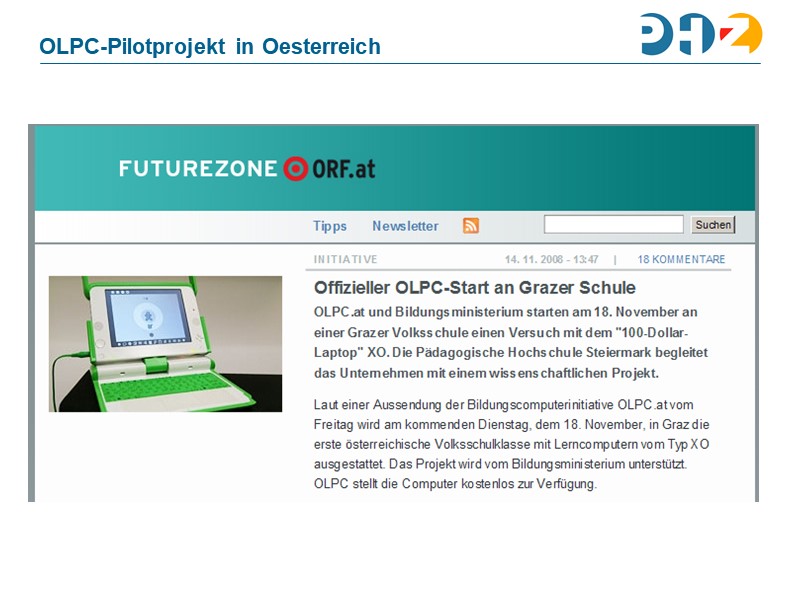
- Das Ende der Kreidezeit?
Eröffnungsreferat an der gleichnamigen Tagung des LI Hamburg
LI Hamburg, 17.04.2009
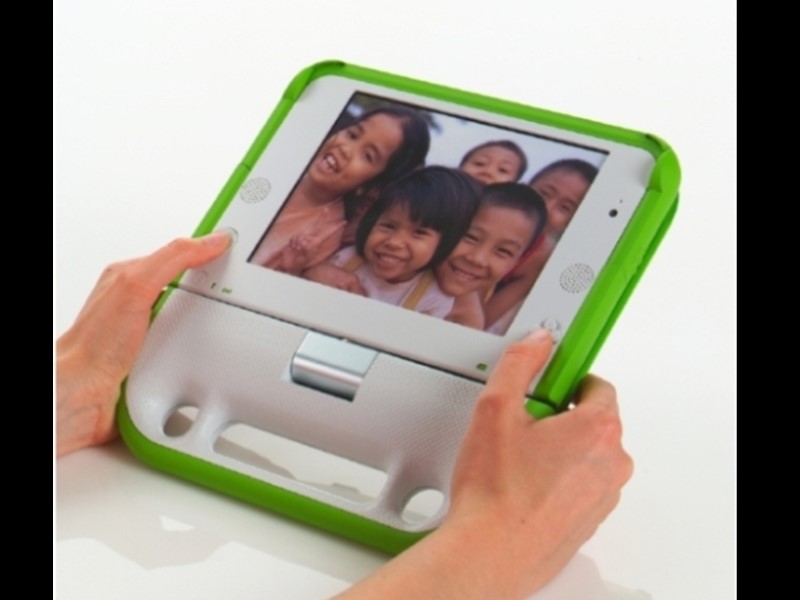
- Verkaufen Lehrmittelverlage bis zum Schluss Bücher?
hep Verlag, 25.03.2010

- ICT im Hosensack - Informatik im Kopf?
Gedanken zu ICT und Informatik in der Schweizer Primarschule
Symposium "25 Jahre Schulinformatik" im Stift Melk, 29.09.2010
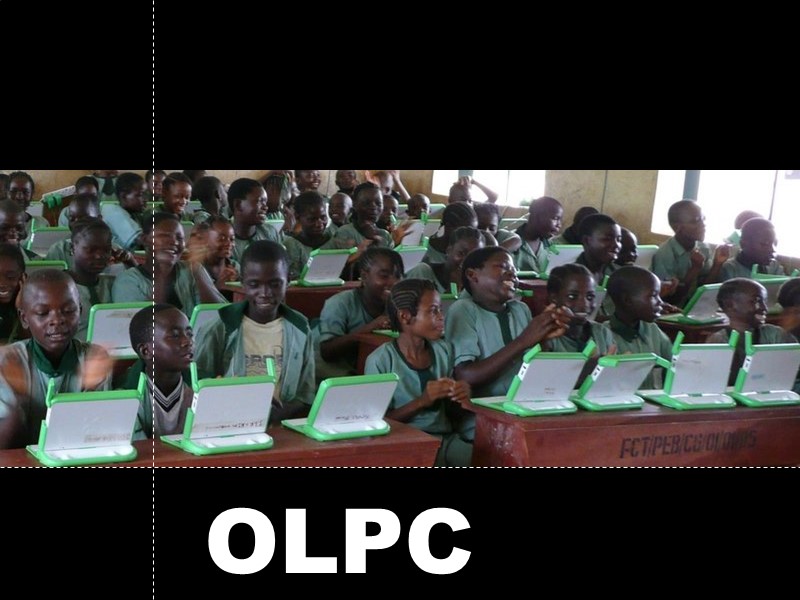
- Smart mit Phone?
Swisscom SAI-Seminar, Basel, 26.10.2010

- DynabookZ
Persönliche mobile Lerngeräte für Zürcher Schulkinder auf Open Source Basis
Workshop eZürich, Zürichsee, 20.01.2011

- Stell Dir vor es ist Schule und alle haben Wikipedia im Hosensack
hep Begegnungstag, BBZ Olten, 26.03.2011

- Uruguay kann’s - was hindert uns?
hep Begegnungstag, Zürich, 05.11.2011

- So alltäglich wie Papier und Bleistift
Visionsworkshop Stadt Zürich
Zürich, 16.03.2012
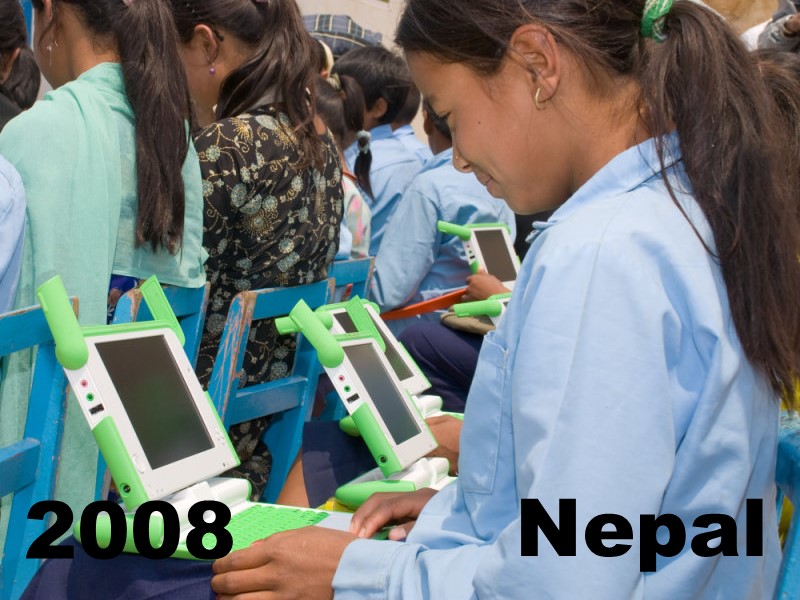
- To Tablet or not to Tablet
Ist das die richtige Frage?
fri-tic, 11.05.2012

- Die Schule renovieren
Interne Weiterbildung der Primarschule Brunnen
Brunnen, 05.03.2014

 12 Einträge in Beats Blog
12 Einträge in Beats Blog
- One Robot per Kid (Juli 2015)
- Generatives Internet oder Virtual Gated Communities? (April 2010)
- International Conference on One-to-One Computing in Education (Februar 2010)
- "Give one - get one" nun auch bei IKEA (Oktober 2009)
- OLPC in Uruguay (April 2009)
- OLPC Switzerland im Radio (April 2009)
- OLPC am Scheideweg? (Mai 2008)
- Technische Innovationen im OLPC XO (März 2008)
- Fiebertraum? (Februar 2008)
- OLPC nun auch in der Schweiz (Januar 2008)
- Erster Protoyp für das OLPC-Projekt vorgestellt (Juni 2006)
- Nicolas Negroponte verlässt das MIT Media Lab (Februar 2006)
 Zitationsgraph
Zitationsgraph
 Zitationsgraph (Beta-Test mit vis.js)
Zitationsgraph (Beta-Test mit vis.js)
 Zeitleiste
Zeitleiste
 81 Erwähnungen
81 Erwähnungen 
- 1-To-1-Learning - Laptop Programs That Work (Pamela Livingston) (2006)

- Developing Technology Policies for Effective Classroom Practice (Glen Bull, John C. Park, Michael Searson, Ann Thompson, Punya Mishra, Matthew J. Koehler, Gerald Knezek) (2007)


- CL1 Hardware Design Specification - September 13, 2007. Revision: 1.03 (2007)


- Jedem Kind seinen eigenen Laptop - Wie der Computerguru Nicholas Negroponte Bildung in den letzten Winkel der Welt bringen will (Nicholas Negroponte, Christine Brinck) (2007)

- Ein Laptop pro Kind (Ariana Pradal) (2007)


- A Conversation with Mary Lou Jepsen (Mary Lou Jepsen, John Ryan) (2007)


- Ethiopia Implementation Report - September - December 2007 (Bjorn Everts, Matthew Herren, David Hollow) (2008)

- One Laptop Per Child (Mary Lou Jepsen) (2008)


- Low-cost devices in educational systems - The use of the "XO-Laptop" in the Ethiopian Educational System (GTZ Deutsche Gesellschaft für Technische Zusammenarbeit, Peter Rave) (2008)

- Tackling the Problems of Quality and Disparity in Nepal’s School Education - The OLPC Model (Saurav Dev Bhatta) (2008)

- Der Drittwelt-Laptop wird unsere Notebooks verändern (Christian Bütikofer) (2008)


- Medienkonzept OLPC für die Projektschule Im.puls (Mala Mukherjee-Süss, Elisabeth Halbherr, Nikolaus Schaller) (2008)

- Why Microsoft and Intel tried to kill the XO $100 laptop (Bryan Appleyard) (2008)
- The Future of the Internet III (Janna Quitney Anderson, Lee Rainie) (2008)


- Konzeption und Erprobung des 'lernstick' im schulischen und ausserschulischen Umfeld (Stanley Schwab) (2009)

- Im blauen Licht der Zukunft (Claus Spahn) (2009)

- Realitätsprüfung für Bildungsrechner XO (Nadja Igler) (2009)


- Digital 03: Ein Laptop für jedes Kind (Beat Döbeli Honegger, Urs Lerch, Michele Notari, Matthias Schüssler) (2009)


- Mobile Technology for Children - Designing for Interaction and Learning (Allison Druin) (2009)

- Introduction: Defining Mobile Technologies, Children and Learning


- Introduction: Defining Mobile Technologies, Children and Learning
- Mit einem Klick aus dem Elend (Till Hein) (2009)


- Doktor Vázquez verschreibt Wissen (Hans Moser) (2009)


- Ein Laptop für jedes Kind (OLPC) - Login Nr. 156 (2009)


- Laptops statt Schulranzen (Joachim Wedekind, Bernhard Koerber)

- Pädagogische Konzepte versus Hardware - Was können wir in Deutschland aus dem OLPC-Projekt lernen? (Richard Heinen, Joachim Wedekind)


- Programmieren mit dem XO-Laptop (Joachim Wedekind, Christian Kohls) (2009)
- One Laptop per Child - Von einer Vision zur globalen Initiative (Christoph Derndorfer) (2009)
- Das OLPC-Pilotprojekt in Äthiopien (Hermann Härtel) (2009)
- Laptops statt Schulranzen (Joachim Wedekind, Bernhard Koerber)
- Communications of the ACM, Volume 52, Number 6 (2009)


- One Laptop per Child - Vision vs. Reality (Kenneth L. Kraemer, Jason Dedrick, Prakul Sharma)


- How Computer Science Serves the Developing World (M. Bernardine Dias, Eric Brewer)


- One Laptop per Child - Vision vs. Reality (Kenneth L. Kraemer, Jason Dedrick, Prakul Sharma)
- INFOS 2009 - 13. GI-Fachtagung Informatik und Schule (21. - 24. September 2009 in Berlin) (Bernhard Koerber) (2009)


- Informatische Bildung im Primarbereich (Henry Herper, Volkmar Hinz)

- Informatische Bildung im Primarbereich (Henry Herper, Volkmar Hinz)
- Sugar - Not necessarily unhealthy - An examination of the XO used in primary schools (Sven Bergmann) (2009)


- First Experiences with OLPC in European Classrooms (Martin Ebner, Johannes Dorfinger, Walther Neuper, Christian Safran) (2009)


- The OLPC XO, Intel Classmate PC and Asus Eee PC user study (Constance Sibanda) (2009)


- Bildung Schweiz 11a/2009 - Sonderheft Computer und Internet (2009)


- Ein Computer pro Schulkind - mit Mobiltelefonen - Einsetzen statt verbieten: Beim iPhone-Projekt in Goldau nutzen alle Kinder einer fünften Klasse ein persönliches iPhone auch in der Schule. (Beat Döbeli Honegger)


- Ein Computer pro Schulkind - mit Mobiltelefonen - Einsetzen statt verbieten: Beim iPhone-Projekt in Goldau nutzen alle Kinder einer fünften Klasse ein persönliches iPhone auch in der Schule. (Beat Döbeli Honegger)
- Monitoreo y evaluación educativa del Plan Ceibal - Primeros resultados a nivel nacional. Resumen, diciembre de 2009. (Ignacio Salamano, Pablo Pagés, Analí Baraibar, Helena Ferro, Laura Pérez, Martín Pérez) (2009)


- Bildung und Schule auf dem Weg in die Wissensgesellschaft (Birgit Eickelmann) (2010)
- Medien. Bildung. Soziale Ungleichheit - Differenzen und Ressourcen im Mediengebrauch Jugendlicher (Helga Theunert) (2010)

- Ein Laptop gegen die Armut - ARTE-Dokumentation (Chiara Sambuchi) (2010)


- A is for App - How Smartphones, Handheld Computers Sparked an Educational Revolution (Anya Kamenetz) (2010)


- Lernplattformen in Schulen - Ansätze für E-Learning und Blended Learning in Präsenzklassen (Dominik Petko) (2010)


- Das OLPC-Projekt (One Laptop per Child) unter dem besonderen Aspekt des Deutschunterrichts (Meneweger Magdalena) (2010)


- Das OLPC-Projekt ('One Laptop per Child') unter dem besonderen Aspekt des Mathematikunterrichts - Eingereicht an der Pädagogischen Hochschule Steiermark zur Erlangung des akademischen Grades Bachelor of Education (BEd) (Angelika Kornberger) (2010)


- eee-pc@school - Notebooks im Volksschulunterricht an der Kirchlichen Pädagogischen Hochschule Wien/Krems, Campus Wien-Strebersdorf (Ilse Bailicz, Martin Newald, Anton Reiter, Wolfgang Seper, Leopold Sperker) (2010)

- 6. Entwicklungstendenzen bei mobilen Geräten
- The PLE Conference - Cornellà // Barcelona // July 8-9 2010 (Ricardo Torres, Graham Attwell, Ilona Buchem, Cristina Costa, Rafael Martín, Tobias Nelkner, Maria Perifanou, Andrea Pozzali) (2010)
- The OLPC XO laptop as a PLE (Fabio Serenelli, Andrea Mangiatordi)


- The OLPC XO laptop as a PLE (Fabio Serenelli, Andrea Mangiatordi)
- Assessment Overview of One Laptop per Child Projects (Zehra Hirji, Barbara Barry, Robert Fadel, Shannon Gavin) (2010)


- 25 Jahre Schulinformatik - Zukunft mit Herkunft (Gerhard Brandhofer, Gerald Futschek, Peter Micheuz, Anton Reiter, Karl Schoder) (2010)


- ICT im Hosensack - Informatik im Kopf? - Gedanken über ICT und Informatik in der Schweizer Primarschule (Beat Döbeli Honegger) (2010)


- ICT im Hosensack - Informatik im Kopf? - Gedanken über ICT und Informatik in der Schweizer Primarschule (Beat Döbeli Honegger) (2010)
- Schools and Schooling in the Digital Age - A Critical Analysis (Neil Selwyn) (2010)


- Can One Latop Per Child Save The World's Poor? (Mark Warschauer, Morgan Ames) (2010)


- 1:1-Ausstattung - Ausgabe 81 der Zeitschrift Computer + Unterricht (Jörg Stratmann, Richard Heinen, Ute Bienengräber) (2011)

- Szenarien für den Einsatz von Netbooks (Peter Baumgartner, Erich Herber, Stephan Waba)

- Szenarien für den Einsatz von Netbooks (Peter Baumgartner, Erich Herber, Stephan Waba)
- 1:1 Computing in der Schule: Wie viele Computer braucht ein Schulkind? - IMS-Fachtagung, 11.02.11 PHZ Schwyz, Goldau (Beat Döbeli Honegger, Dominik Petko) (2011)
- 3. One Laptop per Child in Lateinamerika und was man davon lernen kann (Christoph Derndorfer) (2011)


- 3. One Laptop per Child in Lateinamerika und was man davon lernen kann (Christoph Derndorfer) (2011)
- Eine solche Vernetzung gab es noch nie (Andreas Oppliger) (2011)


- Dossier 'Computer in der Schule' - Neue Luzerner Zeitung, Ausgabe vom 18.02.2011 (2011)
- 'Lateinamerika wird uns im Eiltempo überholen' (Barbara Inglin)

- 'Lateinamerika wird uns im Eiltempo überholen' (Barbara Inglin)
- 2. Workshop «Lerninfrastruktur in Schulen: 1:1-Computing» (Richard Heinen, Andreas Breiter, Beat Döbeli Honegger, Michael Kerres, Renate Schulz-Zander, Joachim Wedekind, Stefan Welling) (2011)


- OLPC - Es funktioniert nur, wenn alle mitspielen. (Christoph Derndorfer) (2011)

- OLPC - Es funktioniert nur, wenn alle mitspielen. (Christoph Derndorfer) (2011)
- DeLFI 2011 - Workshopband (Holger Rohland, Andrea Kienle, Steffen Friedrich) (2011)


- OLPC - Es funktioniert nur, wenn alle mitspielen. (Christoph Derndorfer) (2011)

- OLPC - Es funktioniert nur, wenn alle mitspielen. (Christoph Derndorfer) (2011)
- Informatik in Bildung und Beruf - INFOS 2011 - 14. GI-Fachtagung Informatik und Schule (Marco Thomas) (2011)


- PicoCrickets als Zugang zur Informatik in der Grundschule (Ralf Romeike, Dominik Reichert)


- PicoCrickets als Zugang zur Informatik in der Grundschule (Ralf Romeike, Dominik Reichert)
- One Laptop per Child Birmingham - Case Study of a Radical Experiment (Mark Warschauer, Shelia R. Cotten, Morgan Ames) (2012)


- Digitale Demenz - Wie wir uns und unsere Kinder um den Verstand bringen (Manfred Spitzer) (2012)


- Bildungsbeilage WOZ 2012 - Mobile Learning (2012)

- Für 188 Dollar das gesammelte Weltwissen in der Schulmappe - Ein Laptop für jedes Kind (Daniel Stern)

- Für 188 Dollar das gesammelte Weltwissen in der Schulmappe - Ein Laptop für jedes Kind (Daniel Stern)
- c't 25/2012 (2012)

- Das Wissensnetz - Ein Rundgang durch Online-Lernwelten (Jöran Muuß-Merholz)


- Das Wissensnetz - Ein Rundgang durch Online-Lernwelten (Jöran Muuß-Merholz)
- Framing ICT-enabled Innovation for Learning - The case of one-to-one learning initiatives in Europe (Stefania Bocconi, Panagiotis Kampylis, Yves Punie) (2013)


- Abkapseln oder vernetzen? (Alexandra Rotter) (2013)

- «Schau mal, was ich schreiben kann» (Philipp Hedemann) (2013)

- A travelogue of 100 laptops - Investigating Development, Actor-Network Theory and One Laptop per Child (Lars Bo Andersen) (2013)


- The Naked Future - What Happens in a World That Anticipates Your Every Move? (Patrick Tucker) (2014)

- 7. Relearning How to Learn
- Elektronische Medien im Unterricht - Eine empirische Studie über neu eingerichtete Notebook-Jahrgänge (1:1-Modelle) in der Sekundarstufe I und II an Braunschweiger Schulen (Inga Niehaus) (2014)


- Digitale Dividende - Ein pädagogisches Update für mehr Lernfreude und Kreativität in der Schule (Olaf-Axel Burow) (2014)

- 3. Pädagogik 3.0: Lernen in Freiheit und die Rückkehr zur Kreativität

- 3. Pädagogik 3.0: Lernen in Freiheit und die Rückkehr zur Kreativität
- Urban Myths about Learning and Education (Pedro De Bruyckere, Paul A. Kirschner, Casper D. Hulshof) (2015)

- Python in Education (Nicholas H. Tollervey) (2015)


- Mehr als 0 und 1 - Schule in einer digitalisierten Welt (Beat Döbeli Honegger) (2016)


- BYOD - Start in die nächste Generation - Abschlussbericht der wissenschaftlichen Evaluation des Pilotprojekts (Rudolf Kammerl, Alexander Unger, Silke Günther, Anja Schwedler) (2016)


- Artificial Unintelligence (Meredith Broussard) (2018)

- Inventive Minds - Marvin Minsky on Education (Marvin Minsky, Cynthia Solomon, Xiao Xiao) (2019)


- The Charisma Machine - The Life, Death, and Legacy of One Laptop per Child (Morgan Ames) (2019)

- 1. OLPC’s Charismatic Roots - Constructionism, MIT’s Hacker Culture, and the Technically Precocious Boy
- 2. Making the Charisma Machine - Nostalgic Design and OLPC’s XO Laptop
- 4. Little Toys, Media Machines, and the Limits of Charisma
- 7. Conclusion
- Developing Computational Solutions With Humility - Recommending Morgan Ames' 'The Charisma Machine' (Mark Guzdial) (2020)


- Warum Uruguays Schüler so gut durch die Pandemie kommen (Nicola Abé) (2021)


- Education andTechnology - Key Issues and Debates (3rd edition) (Neil Selwyn) (2022)

- Digitalisierung in Kindergarten und Grundschule schadet der Entwicklung, Gesundheit und Bildung von Kindern - Kommentar zum Gutachten der Ständigen Wissenschaftlichen Kommission der KMK vom 19.9.2022 (Manfred Spitzer) (2022)


- Technology in education: A Tool on whose Terms? (UNESCO United Nations Educational, Scientific and Cultural Org.) (2023)


- A Guide for School Leaders Minimally-Invasive IT (Gary S. Stager) (2024)


 Externe Links
Externe Links
 OLPC Switzerland: OLPC Interest Group Switzerland ( OLPC Switzerland: OLPC Interest Group Switzerland (  : :  2021-03-21) 2021-03-21) | |
 one laptop per child: Official Homeapge of the OLPC-Project ( one laptop per child: Official Homeapge of the OLPC-Project (  : :  2021-03-21) 2021-03-21) | |
 Laptopgiving.org: Give one. Get One. ( Laptopgiving.org: Give one. Get One. (  : :  Link unterbrochen? Letzte Überprüfung: 2021-03-21 Letzte erfolgreiche Überprüfung: 2018-12-11) Link unterbrochen? Letzte Überprüfung: 2021-03-21 Letzte erfolgreiche Überprüfung: 2018-12-11) |









 Morgan
Morgan Beat
Beat Christoph
Christoph
 Biblionetz-History
Biblionetz-History